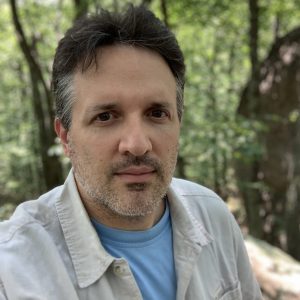Jim Craun celebrated a 100th birthday in June.
Not his—his barn’s.
The barn is one of several buildings that Mr. Craun has restored on his family’s 165-acre farm in Augusta County. The cavernous interior is barely enough to contain his memories of summers spent working there as a boy, when his grandparents owned the place. From unloading the hay wagon to milking and feeding cows in the weathered troughs downstairs, his memories are as vivid as the fresh red stain covering the exterior.
The farm has been in Craun’s family since the 1800s. Although he has spent most of his life as a dairyman in Fauquier County, his love for the Augusta farm is evident in his attention to detail in restoring its buildings. All but one piece of the farmhouse’s siding is original. The interior is meticulously cared for, and the original wood—from the floors to the paneling to the solid cherry staircase and front door—has been refinished to perfection.
One of the more remarkable restorations is a small corn crib next to the barn. Not long ago, the structure was in shambles. “Everyone said, ‘Let it fall,’” Craun says. “But I said no.” He salvaged and restored nearly all of the original wood, including the slotted siding that allows air to come in while keeping the rain out. The building exudes the kind of simple elegance that defines Shenandoah Valley farming. “It’s my pride and joy,” Craun adds.
Craun has restored more than buildings. Between the house and pastures stands a dense patch of vegetation. Hidden there is a spring that was once the source of water for the farm but was stomped shut by cattle over the years. Working with Bobby Whitescarver and the Natural Resources Conservation Service, Craun enrolled in conservation programs that enabled him to dig out the spring, revive its flow, and protect the area with a fence. The spring drains into Naked Creek, a state-listed impaired stream that passes through the farm and has also been fenced off and protected with vegetative buffers.
Craun points out that it was the careful stewardship of his ancestors that enabled the farm to be here today. “My grandparents deserve all the credit because of the way they took care of the place. That was a characteristic of the Crauns. If the Crauns had anything, it was for life.”
It’s that same sense of stewardship that spurred him to place a Virginia Outdoors Foundation easement on the property in 2011. He hopes that future generations will care for the property just as he has.
Admiring the massive oak timbers in the barn, Craun says with a smile, “It’ll outlive me.”
Nothing could please him more.
